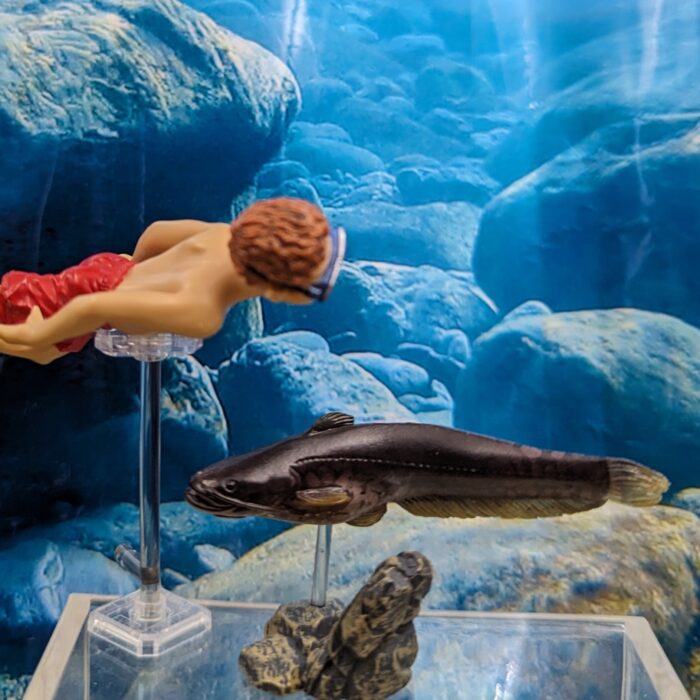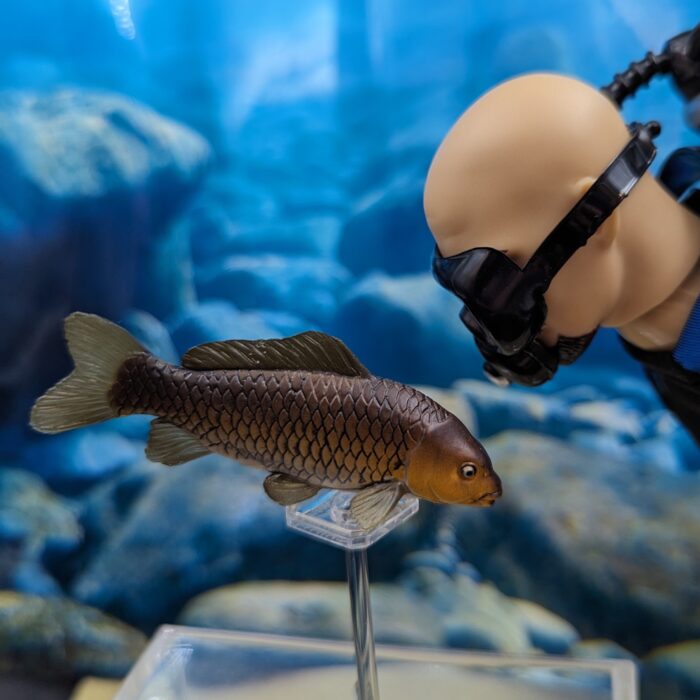This figure is the Amur Goby, Rhinogobius brunneus, model number 28 and number 13 from the second series. This is the only Yujin true goby (Gobiinae, family Gobiidae) in the series. They are quite small fish, generally living on the bottoms of freshwater streams and brackish estuaries, hunting small invertebrates.
Roughskin Sculpin (Freshwater Fishes Book 2, first AND second release by Yujin)

This figure is the Roughskin Sculpin (for reasons that are unclear, the Japanese name Yamanokami apparently translates to “God of the Mountain!”), Trachidermus fasciatus, sculpt number 27 and number 12 from the second series. This is the first and only sculpin (Cottidae) in the Yujin series.
Mongoose (Miniatureplanet 2023 by Eikoh)

In late 2023, Eikoh released another collection in their Miniatureplanet line. Typically, these releases are marked by ‘volumes’, which would make the set Volume 23 if I am doing the math right, although there is no indication on the accompanying paperwork that this is the case. There is a number ’13’ on the paperwork after ‘Miniatureplanet’, but there have clearly been more than 13 sets, and there are more than 13 animals in this particular set (16 to be precise).
Northern Snakehead (Freshwater Fishes Book 2, first and second release by Yujin)

This figure is the Northern Snakehead, Channa argus , model 24 and figure 9 from the second series. These large, strictly freshwater predators are naturally found in the Korean Peninsula, China and Russia. Given the northern range, it is not surprising that they are cold tolerant, and have since been introduced to several other places including the US, Japan and parts of Europe (so far Canada has kept them out, but they are heading to the Great Lakes, so we’ll see how that goes) edit–at least no established populations since this was written.
Japanese Eel (Freshwater Fishes Book 2, second release by Yujin)
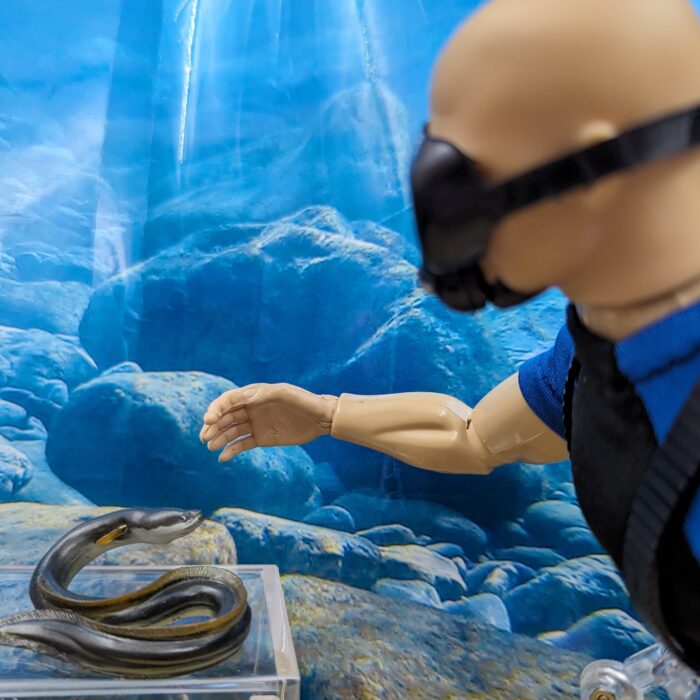
This figure is the Japanese eel (nihon unagi in Japan), Anguilla japonica, model sculpt 23 and number 8 from the second series. This is the only freshwater eel found in Japan, although it is found throughout Eastern Asia as far south as Vietnam. Like many other freshwater eels, the Japanese Eel is catadromous, spawning and hatching at sea but living much of their life in freshwater habitats and brackish estuaries.
Japanese Spined Loach (Freshwater Fishes Book 2, first and second release by Yujin)
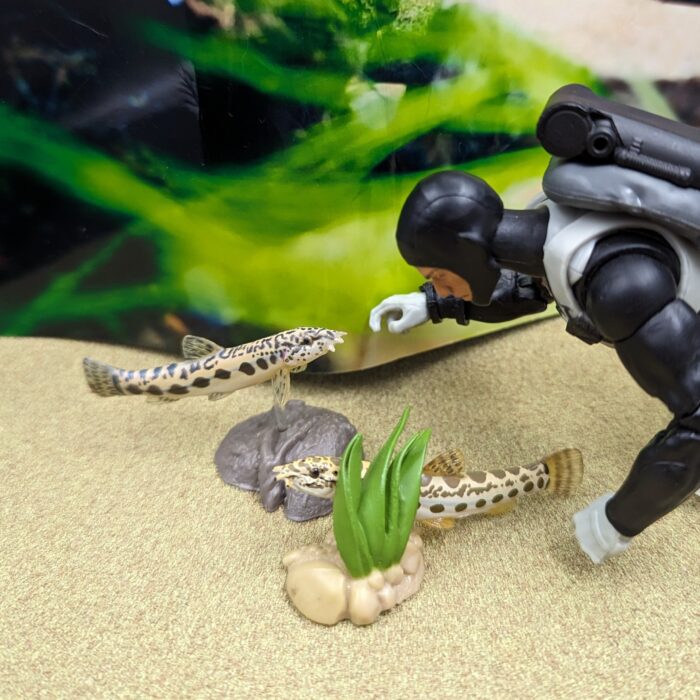
This figure is the Japanese Spined Loach (or Japanese striped loach), Cobitis biwae , model 22, and number 7 from the second series. This is a small, long-bodied loach endemic to Japan, there are numerous potential subspecies but no distinction was made with the model. There are actually a number of similarly-patterned loach species in many parts of Japan, but so far this is the only species specifically identified on figures.
Amur Catfish (Freshwater Fishes Book 2, second release by Yujin)
Kidako Moray Eel (World Fishing Monster Fish by Takara Tomy A.R.T.S.)
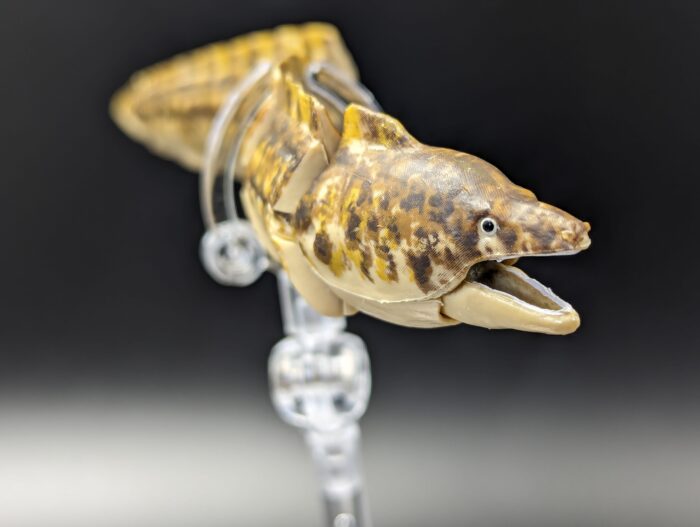
I recently discussed a pair of figures from a Takara Tomy set featuring some unique fish species that are visually or culturally striking. Species that are notable for being scary looking, notorious, and somehow engaging for fishing (I think). I tried to translate the papers and it appears to be called World Fishing Monster Fish, but I can’t be certain.
Amur Carp (Freshwater Fishes Book 2, first release by Yujin)
Japanese Perch (Freshwater Fishes Book 2, first release by Yujin)
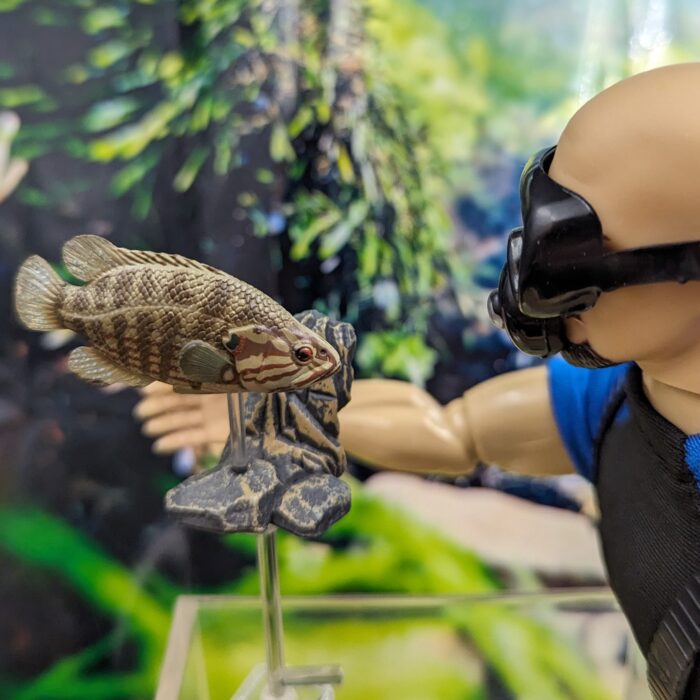
This figure is the Japanese Perch (also known as Aucha perch or Oyanirami in Japan), Coreoperca kawamebari), model 19 and number 4 from the second series, second release. This is a small-sized predatory perch that lives rivers and streams. Often in the middle parts of the water column hunting for invertebrates and anything else.
Eurasian Spoonbill (Wild Animals by Papo)
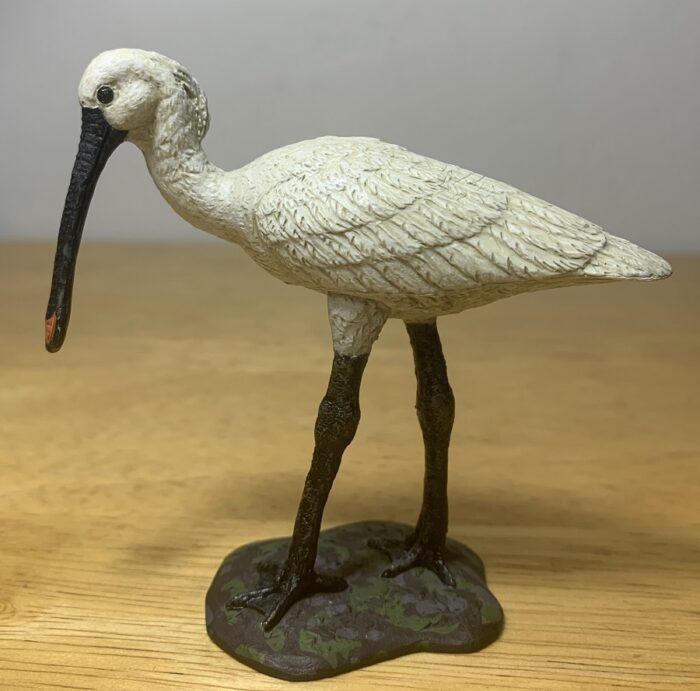
Some of my favorite birds are the spoonbills of the genus Platalea within the Threskiornithidae family. Spoonbills are wading birds found on every continent except Antarctica and characterized by the broad, flatted tip on their bills. Sweeping their bill back and forth underwater, spoonbills use their bill tip to gather up small invertebrates, amphibians, and fishes.
Willow Shiner (Freshwater Fishes Book 2, first AND second release by Yujin)
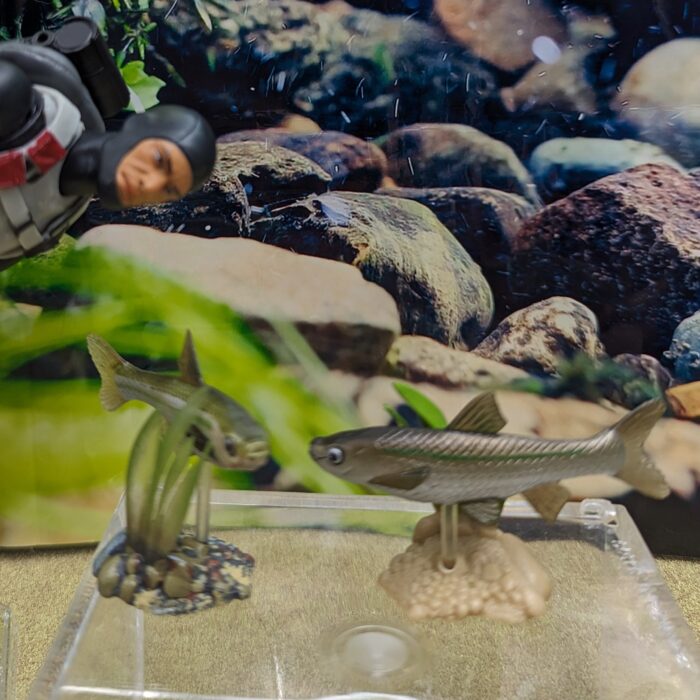
This figure is the Willow Shiner (or in Japan, Honmoroko), Gnathopogon caerulescens, model 18 and number 3 in the second series. At the original time of writing, this was one of two species out of the whole series that I didn’t have. Then I was able to get both versions at once…
Note: with two versions, I am putting up photos as side-by-side ‘galleries; with release 1 (darker coloured) on the left, release 2 on the right.





